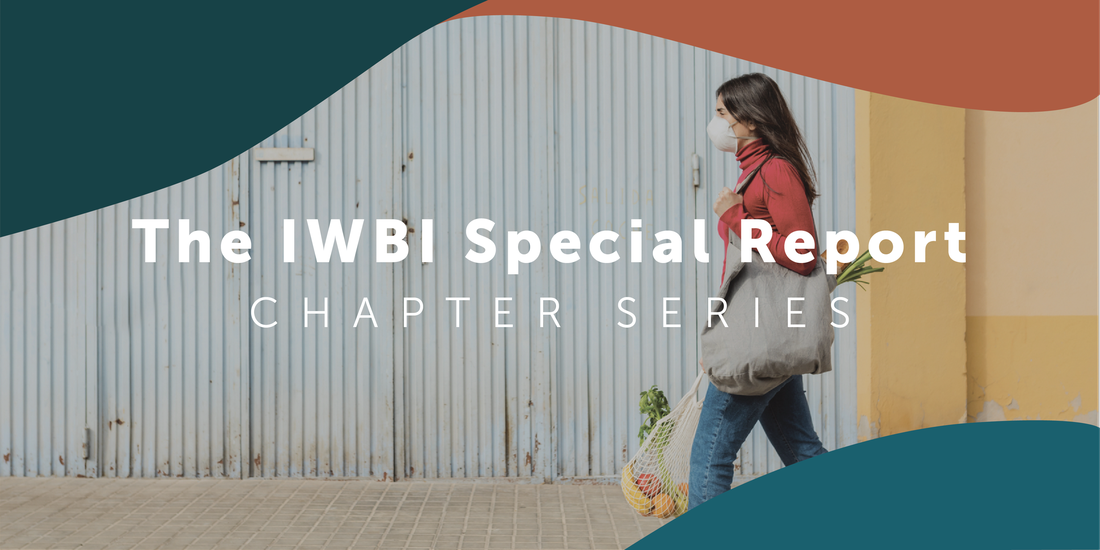The IWBI Special Report Chapter Series: “Airports Embrace Significant Change As They Work to Reconnect Us”

The IWBI Special Report Chapter Series: “Airports Embrace Significant Change As…
In September 2021, IWBI released an in-depth report that lays out research approaches and specific operational strategies as the world continues to respond to the COVID-19 pandemic and prepares for acute health threats into the future. Prevention and Preparedness, Resilience and Recovery: An IWBI Special Report integrates proven strategies from the WELL Building Standard (WELL) and actionable insights garnered from IWBI staff and nearly 600 members of the Task Force on COVID-19 and Other Respiratory Infections.
Over the next few months, we will repost a chapter from the report every week to help highlight specific themes and insights. The IWBI Special Report Chapter Series continues with “Airports Embrace Significant Change as They Work to Reconnect Us,” authored by Mona Holtkötter, CEng MCIBSE, LEED AP, WELL Faculty, Manager, Commercial, EMEA Region, and Julia Keim, MPH, WELL AP, Senior Analyst, Commercial.
Excerpt republished from: Prevention and Preparedness, Resilience and Recovery: An IWBI Special Report
After months of restricted movement to help reduce the spread of COVID-19, people are keen to travel again. As early as April 2020, a third of Americans surveyed planned to travel within three months, once restrictions were lifted, and many of them planned to do so by airplane. By February 2021, 72 percent anticipated that they would definitely or likely travel in the coming year.
To help accelerate society’s return to the skies, many in the aviation industry have leapt into action to try and advance a sophisticated response aimed at addressing public health, beginning with improving the passenger experience. As countries open up again, airports and airlines must make sure passengers feel safe and welcome throughout their entire journey: at the security checkpoint, at the boarding gate, on the plane and in the airport of their destination.
Excerpt: Up in the Air: Air travel during COVID-19
During the initial shutdown, air travel fell more than 90 percent from 2019 levels. And while many are quickly taking to the skies again, some have estimated that a full return to normalcy will not occur until 2023.
Throughout the pandemic, airports and the aviation industry suffered massive financial losses. Many airlines grounded planes, some suspended service entirely, and about 400,000 airline workers around the world lost their jobs. The economic impact extends beyond the planes to the terminals themselves: at Philadelphia International Airport, fewer than10 of the 165 retail stores were open in May 2020, though that is slowly improving.
As we take steps towards a recovery, thanks in part to the aggressive vaccine rollout in some countries, it is difficult to know when travel will be as safe or as robust as it was in 2019. Caution against carrying disease across borders may rightly continue to discourage non-essential travel for the near future…
Excerpt: Clearing the Air: Healthy Air Travel is Required to Get Back to Business
COVID-19 has precipitated a monumental shift in how we approach traveling by plane, a shift not unlike the one seen after the terrorist attacks of September 11, 2001. As airports work to reassess, reconfigure and ultimately resume their vital role, much will be vastly different.
While the bustle of airports will eventually return, the bottlenecks may not. The health risks associated with crowded areas provide a powerful incentive to reimagine the long lines previously ubiquitous in air travel. Instead of queuing to check baggage, pass through security or board a plane, passengers might reserve a certain time on their phones to navigate the preflight process in a safer, more efficient, and simply more enjoyable way…
Conclusion
Air travel is a crucial aspect of our society and economy and connects individuals to the wider world. At the same time, travel is also what can turn a local outbreak into a global pandemic. How we think about airports and movement more broadly will be critical to how we mitigate future surges—and there’s no substitute for giving people the best guidance, especially about when it’s time to stay home.
Of course, passengers are eager to travel again, and they will likely fly as soon as they are confident that steps have been taken—consistently and systematically—to help keep them safe. Despite enormous challenges, passengers have trusted airports and airlines with their personal safety for decades. The question is not if passengers will return to airports, but rather when, and how? By reimagining spaces to mitigate the risk of contact with COVID-19 and other airborne diseases, and by prioritizing health and well-being, airport authorities and staff can make sure passengers are better prepared for take-off again.
Read the full section here.

